
The Royal Botanic Gardens employs more than 240 people, many who are experts in their fields. volunteers work in both locations providing visitor information, guided tours and assisting in with conservation work in the Herbarium
The RBG receives help from the community in many forms, some through Friends of the Royal Botanic Gardens Melbourne which was established in 1982, and the Friends of the Royal Botanic Gardens Cranbourne which was established in 1991.
"The Royal Botanic Gardens Foundation Victoria (RGB Foundation) is a not-for-profit organisation established in May 2001...It's purpose is to provide long-term financial security and funding to the Royal Botanic Gardens."
Collections
The guidelines for the maintenance and development of specific areas within the Gardens is set out in the RBG Melbourne's Living Plant Collections Plan. Part of this has been the expansion of the distinct collections to 31.
"The 31 living collections fall into five categories as defined by collection themes or specific criteria: geographical zones, ecological communities, taxonomic and evolutionary attributes, research and conservation, and major display areas. RBG has over 50,000 individual plants on-site, representing over 10,000 species including specimens of rare wild-collected plants. The management of these collections is reviewed periodically to take into account changes in scientific, social and cultural attitudes towards botanic gardens." (Floreo 25, Autumn 2012 p 6).
For a map of the collections and photos, click here.
Working Wetlands Project
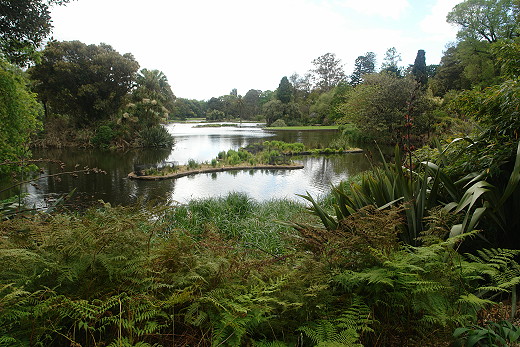
Royal Botanic Gardens Melbourne Ornamental Lake near William Tell House (c) 2013 Ali Kayn
The Working Wetlands project is a stormwater harvesting and recycling project. Stormwater diversion drains, bio-filtration wetlands, floating wetlands and pump wells have been installed throughout the Gardens and lakes system.
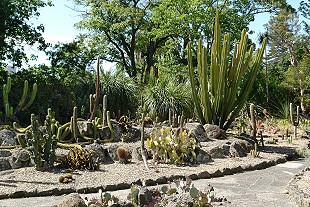
The Arid Garden
The collection was created in 1946. 80% of the columnar cacti and succulent collection in the Arid Garden was 'hacked down' in June 2013. This photograph was taken before the attack.
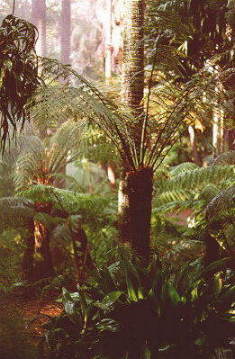
Fern Gully
Designed by William Guilfoyle in the late nineteenth century.
A major redevelopment plan includes replacing the existing path and culverts with an all abilities boardwalk and five new bridges.
in Floreo #28 Spring 2013 Director and Chief Executive Officer Tim Entwhistle said, "Guilfoyle's 19th century design transformed the area from a creek that flowed through the centre of the Gardens into a place of beauty and horticultural richness. Along with the different species that he planted, he placed rocks and spillways along the creek to produce water movement and sound, recreating the natural ambiance of a fern gully. The construction of a boardwalk will provide greater access to the area, but it will also have a positive impact on plant health, alleviating compaction on tree roots from existing paths. We're also planning on introducing new plants to the area by planting a range of interesting flora adjacent to the boardwalks and bridge crossings."
RGB Melbourne is a heritage-listed site All major works require an approved Heritage Impact Statement.
Long Island
Sandra Hodge, curator of the Lower Yarra River Habitat Collection says, "Long Island is such a peaceful place to visit. People go there to relax, to read books, to picnic and bird watch...Our international visitors walk through and get a taste of what the Australian bush might look like.. It's a really beautiful part of the Gardens and such an amazing place to work."
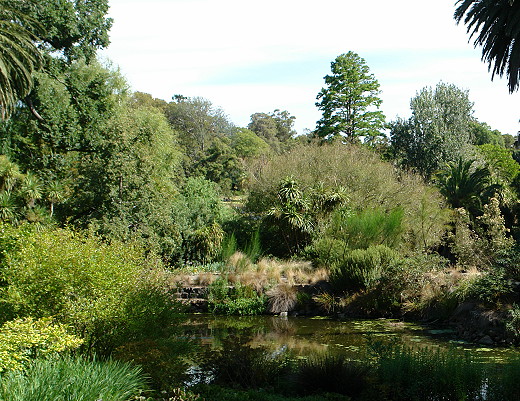
"Long island is on the original site of the Yarra River. There was a bend ... that went through where my collection is, but the river banks were moved across the road to its current position in the late 1800s because it used to flood."
The Long Island landscape was designed by Andres Laidlaw about 2002 to help preserve local species including indigenous orchids. Says Hodge, "By re-introducing plants that used to grow there, we're trying to give people a sense of what it may have looked like. "
A further site was purchased south-east of Melbourne with the assistance of the Maud Gibson Trust establishing the Royal Botanic Gardens Cranbourne in 1970. Including additional purchases, the Cranbourne site is now 363 hectares.
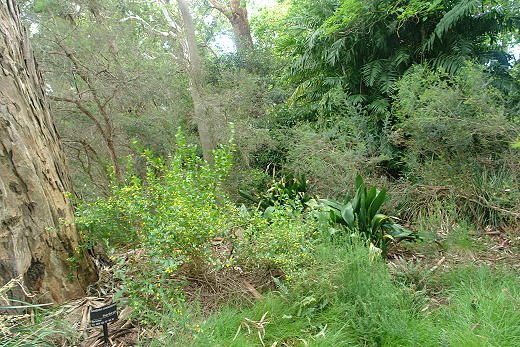
Lower Yarra River Habitat, taken from near Separation Tree (c) 2013 Ali Kayn

The Ornamental Lake
One of the most popular features of the gardens is the ornamental lake. During the drought, the bottom of the lake could be seen. When we returned the lake had a high water level and was being enjoyed by a mother swan and her cygnets.
A recent addition to the offerings of the gardens is punting. Visitors can now take a punt in a wooden punt on the Ornamental Lake. The 30 minute guided, chauffeured punt tours departs from a landing in front of The Terrace and cruises around the islands and bays of the lake.
"What a way to appreciate the beauty and plants of the Gardens, gliding peacefully across the Ornamental Lake. You'll see our gorgeous garden landscapes as never before, as well as get close up and personal with our amazing birdlife and aquatic plants," said Professor Tim Entwisle, Director and Chief Executive of the Royal Botanic Gardens.
Click here for more information
Our Favourite Places
As well as numerous seats and The Terrace restaurant, there are a number of rest houses throughout the gardens. To see them, click on them using the features map of the Royal Botanic Gardens.
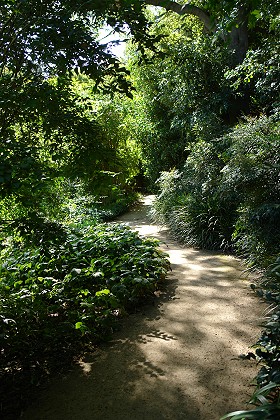
We particularly love those places where the visitors can wander through the plants. The grey gardens are interesting, the roses are pretty when they are in flower, but we love the winding paths of Fern Gully and the Southern Chinese collection at left.
Click on the photograph for a larger image.
As the weather heats up, the gardens, also known as 'The Tan' or 'The Tannie' offer cool places to escape the heat, as well as an opportunity to enjoy plants that one might not otherwise see.
The gardens give a great deal to Melbourne. They are a place to visit, a place to learn, and a place of research and study. They are a living history, and a great memory. Adults remember visiting the Tan as children, and can take their family and friends in turn to enjoy the delights that appear with every turn of the paths.
The gardens management also use sustainable practices, saving money, protecting the species, and providing data for future studies. For example, solar cells on seven buildings in three locations at RBG Melbourne are expected to offset about 60% of the energy needs required by the Working Wetlands project.
The RBG has a range of publications available, including Floreo which is currently available online. The publications include scientific journals and material such as Floreo that can be enjoyed by everyone.
If you can visit the gardens in person, the online Gardens Shop has over 300 botanical and garden related items for sale.
You can also visit with RGB on Facebook
Subscribe to RGB's eNews online at www.rgb.vic.gov.au/about-us
Want more pictures? Go to our clickable maps to see photographs of various parts of the gardens.
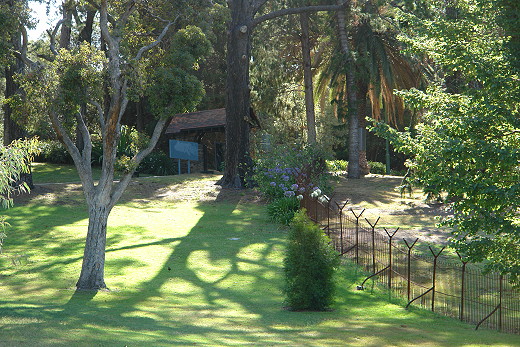
Lych Gate and Huntingfield Lawn (c) Ali Kayn 2009

Ali Kayn is a journalist and editor and publisher of Festivale Online Magazine. For more by Ali, use the search Festivale box (bottom field) .
For posts about Melbourne events, places, news, reviews, giveaways, see our Facebook Page:

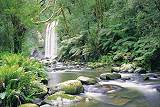







 Published in Melbourne, Victoria, Australia
Published in Melbourne, Victoria, Australia